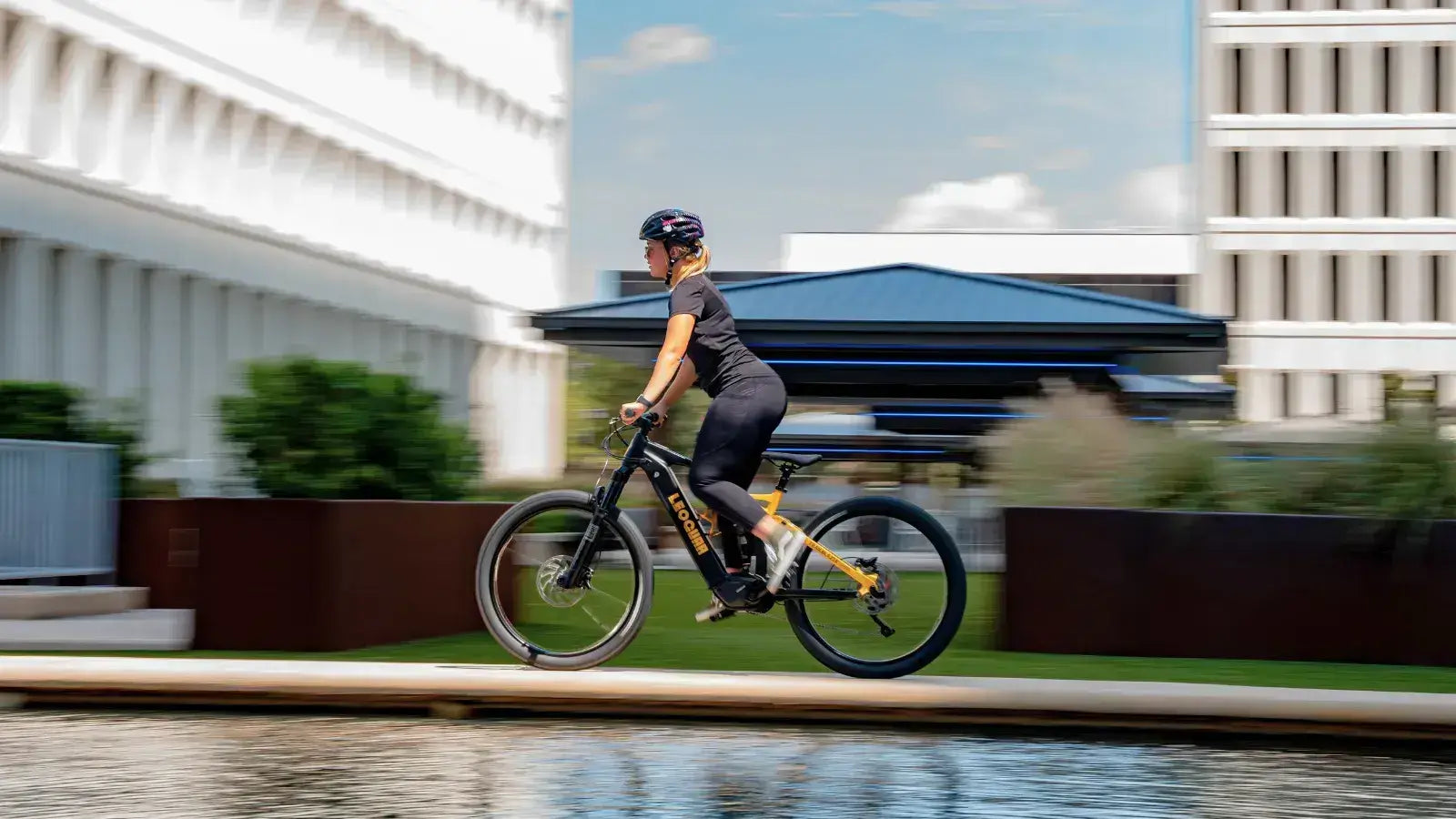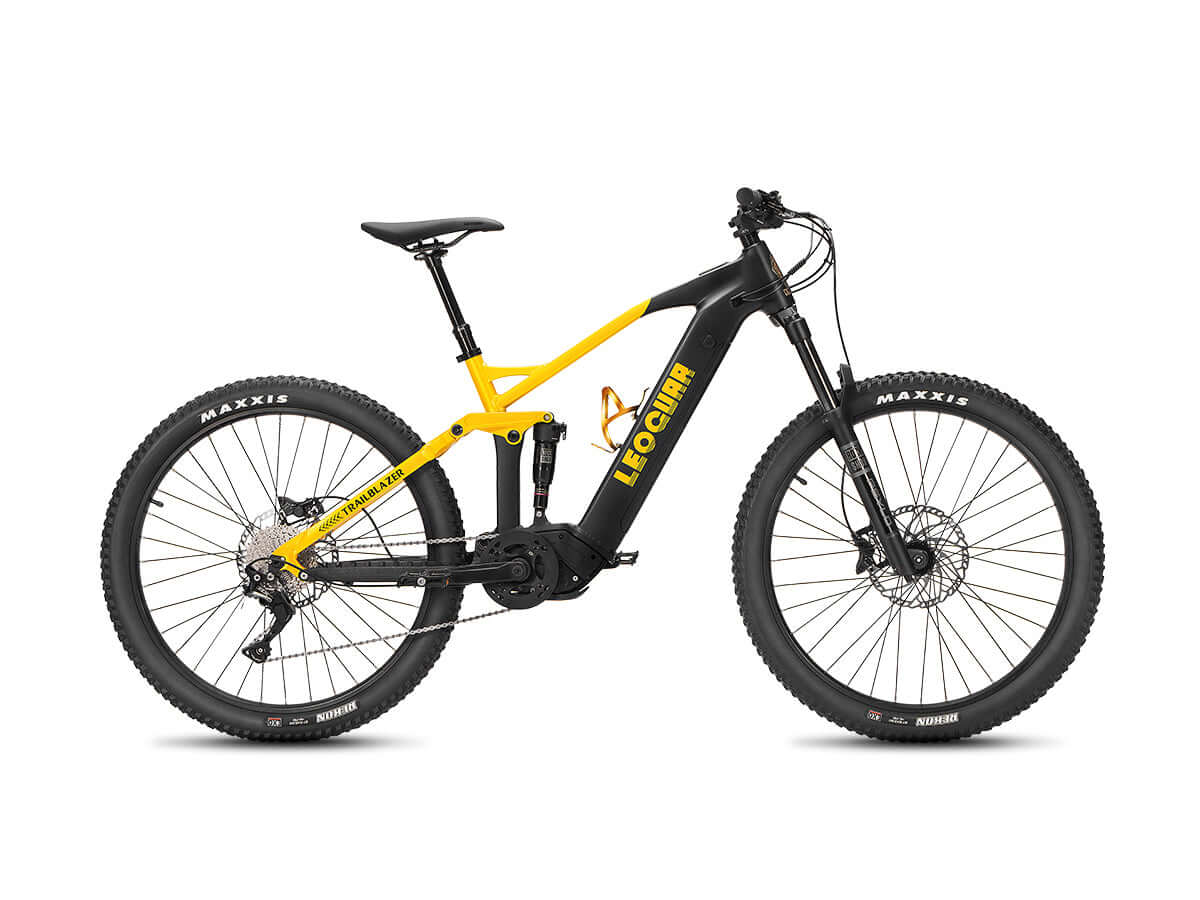
50 MPH Electric Bike for Sale: Legal Speed Limits Explained
The 50 MPH Misconception
You're searching for a "50 mph electric bike for sale" because you want speed and freedom. Let's get straight to the point: any two-wheeled electric vehicle that can reach 50 mph using its motor is not a legal e-bike. It is legally classified as a moped or a light motorcycle.
This isn't just a matter of terminology. This reclassification has massive real-world consequences that affect your daily riding experience. It means the vehicle requires a license plate, registration with the DMV, and mandatory liability insurance. You, the rider, will need a specific driver's license endorsement which is typically a motorcycle license. Furthermore, these vehicles are strictly forbidden from bike lanes, multi-use paths, and any trail designated for bicycles.
While some sellers might use the term "e-bike" to market these high-speed machines, the law sees them as motorized vehicles. Understanding this distinction is the single most important step in your search, protecting you from legal trouble, fines, and potential vehicle impoundment that could ruin your riding plans. We're here to guide you through what's possible, what's legal, and what's genuinely fun.
When a Bike Becomes a Motorcycle
The term "electric bike" has a precise legal definition. In the United States, federal law specifically HR 727, the Consumer Product Safety Act sets the ground rules for what counts as an actual bicycle. It defines a low-speed electric bicycle as a two- or three-wheeled vehicle with a motor of less than 750 watts which equals 1 horsepower and a maximum assisted speed of 28 mph.
Any vehicle that exceeds these federal limits crosses into the territory of motor vehicles. It either has a more powerful motor or provides assistance beyond 28 mph, which means it's no longer a bicycle in the eyes of the law. Some manufacturers and importers exploit this gray area by marketing powerful machines as "e-bikes" for off-road use, knowing full well that customers will ride them on public streets. This is a risky game for the owner because getting caught means serious legal trouble. As regulators catch on, there are new proposals to reclassify high-speed e-bikes to close these loopholes and improve safety.
Think of it this way: you can put a V8 engine in a go-kart, but that doesn't make it a street-legal car. Similarly, putting a 5000W motor on a bicycle frame creates a light electric motorcycle, not an e-bike that you can ride freely.
The 3-Class System Explained
To clarify what constitutes a legal e-bike, most U.S. states have adopted a 3-Class system. This framework is your best guide to understanding what you can buy and ride without a motorcycle license, helping manage where different types of e-bikes can be used while ensuring safety for all path and road users. Here's how it breaks down:
Class 1 bikes work by providing motor assistance only when you are pedaling, which is called pedal-assist, and there is no throttle. The motor stops assisting at 20 mph, making these bikes generally allowed anywhere a traditional bicycle can go, including most bike paths and multi-use trails.
Class 2 bikes feature a throttle which can power the bike without any pedaling, plus they also have pedal-assist functionality. Whether using the throttle or pedal-assist, the motor cuts off at 20 mph, but access can be more restricted than Class 1 since some trails and paths that allow Class 1 may prohibit any e-bike with a throttle.
Class 3 represents the fastest class of legal e-bikes and is pedal-assist only, though some models may include a throttle that legally must cut off at 20 mph while pedal-assist continues up to 28 mph. The motor provides assistance up to 28 mph, but these bikes are often restricted from bike paths and multi-use trails due to their higher speed, making them primarily designed for use in bike lanes on public roads.
It is crucial to check your local rules, as regulations can differ between states and cities. PeopleForBikes maintains a helpful database of state-by-state e-bike laws that you should consult before making your purchase.
50 MPH Bike vs. Class 3
To make an informed decision, you need to see the real-world differences between the "50 mph bike" you searched for and the fastest legal e-bike available. The trade-offs in cost, convenience, and freedom are significant and will affect every aspect of your riding experience.
| Feature | "50 mph Bike" (Moped/Motorcycle) | Class 3 E-Bike |
|---|---|---|
| Top Speed | 50+ mph (motor-powered) | Up to 28 mph (with pedal assist) |
| Legal Classification | Moped or Motorcycle | Bicycle |
| License & Registration | Required (Motorcycle license, plates) | Not Required |
| Insurance | Mandatory (Motorcycle liability) | Optional (but highly recommended) |
| Where to Ride | Public roads only; BANNED from bike paths | Roads, bike lanes (check local laws) |
| Required Equipment | DOT-approved helmet, mirrors, turn signals | Bicycle helmet (recommended) |
| Upfront Cost | Generally $4,000 - $15,000+ | Generally $1,500 - $5,000 |
The requirements for a moped or motorcycle are not trivial and involve significant time and money investments. For example, meeting California's motorcycle license requirements involves a written test, a driving skills test, and proof of financial responsibility that can take weeks to complete. A Class 3 e-bike, by contrast, has none of these hurdles since you can buy it and ride it home the same day.
What Real Electric Bike Speed Feels Like
Numbers on a screen don't always translate to the real world experience you'll have while riding. As people who ride these bikes daily, we can tell you that the experience of speed on a lightweight bicycle platform is very different from that in a car and much more exciting than you might expect.
20 mph on Class 1 and Class 2 bikes feels like a sustained, brisk sprint on a traditional bike, but you can maintain it for miles without breaking a sweat. It's the perfect speed for navigating city bike lanes, staying ahead of slow-moving urban traffic, and feeling a refreshing breeze that makes every ride enjoyable. It's fast enough to be fun and efficient without being intimidating, making it ideal for both new and experienced riders.
28 mph on Class 3 bikes is genuinely fast and delivers a thrilling riding experience. At 28 mph, you are keeping pace with city traffic while the wind noise becomes significant, requiring your focus to be entirely on the road ahead. It delivers a real sense of velocity and excitement that satisfies the need for speed for most riders who want an adrenaline rush. Holding this speed on a bicycle frame is a thrilling experience that requires full attention but provides an incredible sense of freedom.
40-50 mph on moped or motorcycle territory is no longer a bicycle experience but full-on motorcycle riding. You are a vehicle in the flow of traffic, and you must operate with the defensive posture of a motorcyclist where safety becomes the primary concern. The forces, braking distances, and required gear are all on a different level that demands respect and experience. It's a different kind of fun, but it is not "e-biking" in the traditional sense.
Choosing Your Fast E-Bike
If the thrill and freedom of a Class 3 e-bike appeal to you, you've made a great choice. You get high speed without the legal burdens of a motorcycle, plus the flexibility to ride in more places than a moped or motorcycle would allow. When shopping for a high-performance, legal e-bike, here are the key features to look for:
Motor power and torque should be your first consideration since while 750W is the legal power limit, the more important metric for performance is torque, measured in Newton-meters. A high-torque motor with 80Nm or more will deliver faster acceleration and better hill-climbing ability, which is crucial for a performance feel that matches your speed expectations.
Hydraulic disc brakes are essential for safety at 28 mph since you need serious stopping power. Mechanical disc brakes are adequate for slower speeds, but hydraulic disc brakes offer superior control, less hand fatigue, and more consistent performance in all weather conditions. They are a non-negotiable feature for a quality Class 3 bike that you'll rely on for safe stops.
Frame and suspension design affects both safety and comfort at higher speeds. A sturdy, well-engineered frame is essential for stability at speed, while a front suspension fork will absorb road bumps, providing a safer and more comfortable ride by keeping your front wheel planted on the pavement.
Tires should be wider, at least 2.2 inches, with a good tread pattern for maximum safety. They provide a larger contact patch for better grip, stability, and puncture resistance that becomes more important as speeds increase.
Safety certifications ensure your bike meets important standards, so make sure the bike's battery and electrical system are UL 2849 or UL 2271 certified. This is a critical safety standard that protects against fire hazards that could be dangerous or even deadly. Always pair your ride with proper safety equipment, following NHTSA guidelines for visibility and protection.
For a deeper dive into features, consider reading a comprehensive e-bike buying guide to become even more informed about your options.

Ride Fast, Ride Legal
The search for a 50 mph electric bike for sale ultimately leads to a choice between two very different experiences. Do you want the speed and responsibilities of a light motorcycle, or the thrilling-yet-accessible performance of a high-speed, legal e-bike that offers more freedom?
While 50 mph is motorcycle territory, a Class 3 e-bike offers an incredible 28 mph experience that combines speed, exercise, and the freedom to ride in more places. By understanding the laws and choosing a well-built, certified machine, you can satisfy your need for speed while riding smartly and legally without the hassles of motorcycle ownership. Enjoy the ride, and stay safe.
Frequently Asked Questions
1. Can I legally ride a 50 mph electric bike on public roads?
No, a 50 mph electric bike is legally classified as a moped or motorcycle, not an e-bike. You would need a motorcycle license, registration, insurance, and it cannot be ridden in bike lanes or on bike paths.
2. What's the fastest legal electric bike speed I can get?
The fastest legal e-bike speed is 28 mph with a Class 3 e-bike. These bikes provide motor assistance up to 28 mph while pedaling and are still classified as bicycles under federal law.
3. Do I need a license for a Class 3 e-bike?
No, you don't need any special license for a Class 3 e-bike. Since it's legally classified as a bicycle, you can ride it with just a regular driver's license or even without one in most states.
4. Where can I ride different classes of e-bikes?
Class 1 e-bikes can ride almost anywhere regular bikes can go. Class 2 e-bikes have some restrictions on certain paths due to their throttle. Class 3 e-bikes are often limited to roads and bike lanes, not bike paths or trails.
5. How much should I expect to pay for a quality Class 3 e-bike?
Quality Class 3 e-bikes typically range from $1,500 to $5,000. This is significantly less than the $4,000 to $15,000+ you'd pay for a 50 mph moped or electric motorcycle, plus you avoid ongoing costs like registration and mandatory insurance.









































Leave a comment